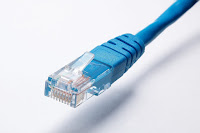What Cables Should You Pick For Your Home Network?
Technology is progressing at a breakneck speed. You must ensure that your cabling network meets the needs of your home requirements. Time and money are saved when you choose the right Ethernet cable. However, there are various cables available, such as Cat5e, Cat6 Ethernet cables, and so much more on the list.
Knowing the distinctions between the many types of Ethernet cables, you may believe that selecting the most appropriate Ethernet cable for your network is a simple task. Does this, on the other hand, provide you with enough information to make an informed choice? Is there anything more that you need to take into consideration? This article will provide you with the solution.
Learn About Different Types of Ethernet Cables
Let us first begin this article by understanding each type of cable in detail. But, before that, check out what 'Cat' means exactly.
Perhaps you must have been looking for Ethernet cables on the internet for a while. Most cables are labeled with a classification name like "RG 58 cable" or "outdoor CAT 5e cable," as you must have noticed. In simple terms, "Cat" stands for Category. A lot of others also exist, but we are focusing on the "Cat" cables. The number that appears after the word "Cat" refers to the cable's manufacturer parameters. It is said that the greater the number, the faster the speed frequency.
Cat5 Cable
When it comes to local networks, Ethernet connections, telephony, and data transfer, Category 5 cable (or Cat5 cable) is the standard. Category 5 cable is constructed of twisted pairs rather than coaxial cable or fiber-optic cable. There are no restrictions on the performance of this standard cable, which can handle up to 100 MHz of bandwidth. Signals for phones and video are also transmitted by it.
Cat 5 cables are primarily used in cables for computers. It is suitable for both Gigabit Ethernet applications and High-Speed Ethernet. This implies you can use it for the internet and other home network services.
Cat5e Cable
Cat5e cables are an improved form of Category 5 cable, suggesting a lower-noise version with less chance for crosstalk. In part, this is because the cable has an average of two twists every centimeter, which enables it to carry information without experiencing considerable performance degradation. While Cat5 and Cat5e both support frequencies up to 100MHz, the Cat5e patch cable has overtaken the Cat5 patch cable in terms of reliability and use.
Cat6 Cable
A twisted pair cable used in Ethernet and network applications, Category 6 is also known as Cat 6. As a result, it may be used in conjunction with both Cat 5 and Cat 5e cables. When compared to Cat 5 and Cat 5e cables, these cables have better bandwidth capabilities.
Compared to their predecessors, these are much more costly due to the tighter winding and foil and braided shielding they feature. In these Ethernet cables, the shielding protects the twisted wires within them, which helps to reduce the likelihood of crosstalk and noise interference occurring. These cables are capable of carrying data at speeds of up to 10 Gbps, but only up to a distance of 55 meters. Crosstalk and system noise are more stringently controlled in Cat 6 than in Cat 5.
Crossover Cables Vs. Straight-Through Cables
In most circumstances, straight-through twisted-pair Ethernet cables will be used to connect the devices on your network together. Connecting older network switches without an uplink port, or connecting specialized network devices, may necessitate using crossover cables when connecting two computers.
Length and Colour Of Cables Are Important Considerations
It is also important to consider the length and color of your home network cables when selecting them:
Color
Ethernet cables with twisted pairs are available in a variety of colors. Individual preferences and interests can be taken into consideration when making this decision. Colors such as blue and grey are popular choices, but you could also go with whites, grey, or another neutral hue that just doesn't match with your walls or carpeting. Finally, you may wish to stick with a single color for all of the cables in your network.
Length
Twisted-pair Ethernet cables are available in various standard lengths, including 3, 5, 7, and 10 feet. Longer cable lengths are available, and you can even request custom cable lengths to be manufactured. The distance between your various network devices and your network switch or router will determine the length you require. Keep in mind that you'll need some extra length to route cables under carpets and around corners.
There's no denying that the appropriate Ethernet cable may significantly improve the performance of your home network. We hope this information has helped you learn more about cables and pick the best option for your network application.
To get more ideas about the network cables, you can visit Cables.com.




Comments
Post a Comment